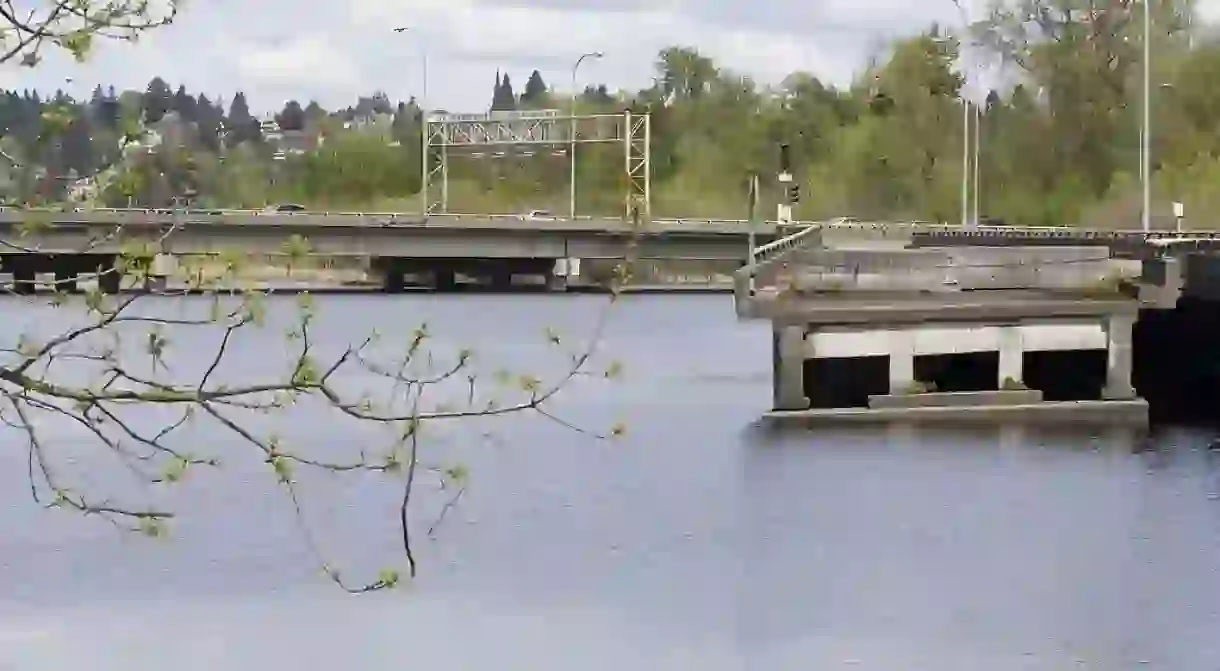The Story Behind Seattle’s ‘Ramps to Nowhere’

Why does Seattle have off-ramps that are unfinished, dropping off into nothing? Why have these roads with no destination been standing tall for a half-century? And how on earth do unused concrete giants represent environmentalism in the Emerald City? It is said that democracy works best when its citizens get involved. Seattle’s Ramps to Nowhere are an example of just that.
Back in the 1960s, the Washington State Department of Transportation (WSDOT) was planning to connect the 520 floating bridge to I-5 via the R. H. Thomson Expressway (sometimes referred to as the Empire Expressway), which would cut through the Washington Park Arboretum as well as a handful of neighborhoods. The majority of homes that would be displaced belonged to poorer, working-class, black families.
It didn’t take long for people to rally against the expressway’s construction, unifying faculty and students from the University of Washington, the Black Panther Party, and environmental groups against the city’s plans. Numerous groups were formed, namely the Citizens Against the R. H. Thomson Expressway (CARHT).

Not only were people trying to save their homes and stand up for black communities, but they were also concerned about the future highway’s impact on the city’s livability. At this time, environmental sustainability was a relatively new topic of conversation. The citizen activism went so far as to actually block bulldozers ready to continue construction, ultimately leading protestors to success. With the activists changing the city’s mind, construction was halted in the early ’70s, leaving incomplete, ghost ramps hanging off into nothing.
Since 1972, the ramps that were unused by vehicles became a summertime spot for pedestrians. Kayakers and canoers would wind through the support columns in the water and swimmers would climb up to jump off into the water. Used for picnicking and stargazing alike, one of the WSDOT’s many projects on pause may not have served its originally intended purpose, but the ramps became an important part of the city nonetheless.
In the 2010s, the beloved Ramps to Nowhere became once more a relevant part of the city’s discussion. With the impending renovation of the 520 floating bridge, the WSDOT intended to tear down the remaining ramps. Suddenly, citizens were fighting to preserve the roads they had fought against 50 years prior.
Groups such as Activists Remembered, Celebrated and Honored (ARCH) argue that the ramps are a valuable symbol in the city, a memorial to those who fought the freeway and won, as well as an important reminder that people can make a difference. The ramps represent a decision, driven by the citizens of Seattle, that kept the city from becoming a highway-dependent metropolis like Los Angeles, building the foundation for it to grow into the bicycle-friendly and public-transit proponent that it proudly is today.
Following the precedent set by Gas Works Park, which hosts the ruins of an old refinery, the supporters of the city’s ghost ramps hope to preserve a small portion of a single ramp in the North Entry of Washington Park Arboretum. Though its permanent residence in the park has yet to be assured, it is safe for now, with plans to finalize its future very soon.
It looks like Seattle’s Ramps to Nowhere led us somewhere after all.













